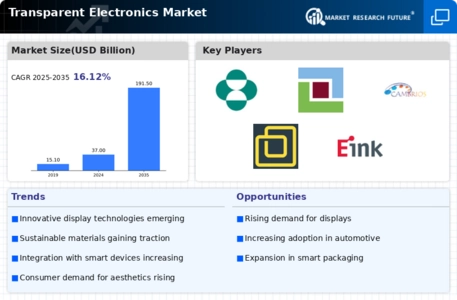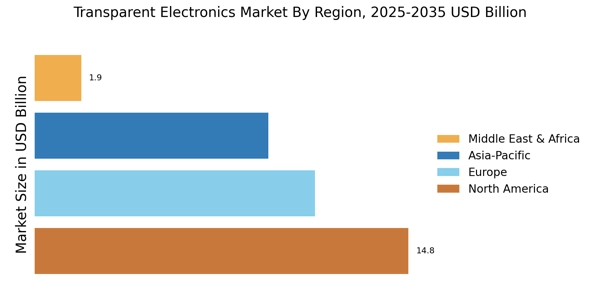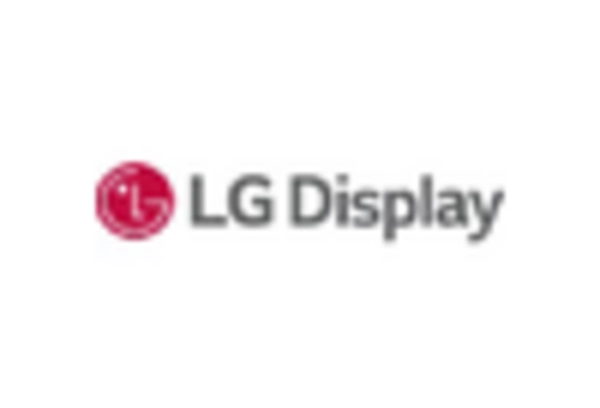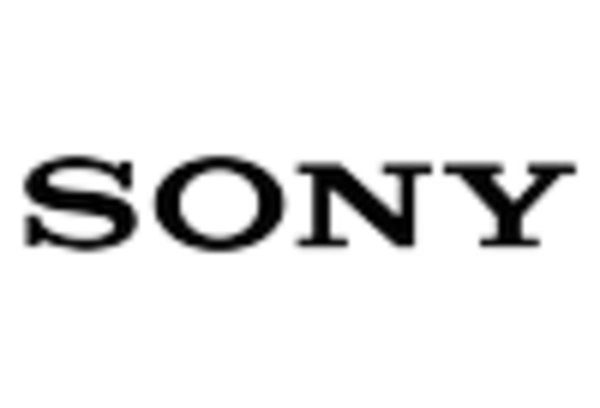Emergence of Smart Home Solutions
The Transparent Electronics Market is benefiting from the emergence of smart home solutions. As consumers increasingly adopt smart technologies for home automation, the demand for transparent electronics is likely to rise. These devices can be integrated into home environments, providing functionality while maintaining aesthetic appeal. For instance, transparent sensors and displays can be embedded in furniture or walls, allowing for seamless interaction with smart home systems. Market forecasts indicate that the smart home segment is expected to grow significantly, with projections suggesting a market size of over 100 billion dollars by 2025. This trend is driven by the desire for convenience, energy efficiency, and enhanced security in residential settings.
Growth in Automotive Applications
The Transparent Electronics Market is poised for growth due to the increasing adoption of transparent electronics in automotive applications. As the automotive sector evolves towards smart and connected vehicles, the integration of transparent displays and sensors becomes essential. These technologies enhance driver safety and provide real-time information without obstructing visibility. Recent market analyses suggest that the automotive segment for transparent electronics could reach a valuation of several billion dollars by 2026. This growth is attributed to the rising consumer preference for advanced driver-assistance systems (ADAS) and the ongoing trend towards electric vehicles, which often incorporate innovative technologies to improve user experience and functionality.
Increased Focus on Sustainability
The Transparent Electronics Market is witnessing an increased focus on sustainability and eco-friendly technologies. As consumers and manufacturers alike become more environmentally conscious, there is a growing demand for transparent electronics that utilize sustainable materials and processes. Innovations in biodegradable and recyclable materials are paving the way for the development of transparent devices that minimize environmental impact. Market Research Future indicates that the sustainable electronics segment is projected to grow at a rapid pace, potentially reaching a market size of several billion dollars by 2028. This shift towards sustainability not only aligns with consumer preferences but also encourages manufacturers to adopt greener practices, thereby enhancing their competitive edge in the transparent electronics market.
Advancements in Display Technologies
The Transparent Electronics Market is significantly influenced by advancements in display technologies. Innovations such as organic light-emitting diodes (OLEDs) and liquid crystal displays (LCDs) are paving the way for the development of transparent screens. These technologies allow for the creation of displays that can be integrated into various surfaces, including windows and walls, enhancing user experience and interaction. Market data indicates that the transparent display segment is expected to witness substantial growth, with projections suggesting a market size exceeding several billion dollars by 2027. This trend is further fueled by the increasing demand for augmented reality (AR) and virtual reality (VR) applications, which require high-quality, transparent displays to create immersive experiences.
Rising Demand for Wearable Technology
The Transparent Electronics Market is experiencing a notable surge in demand for wearable technology. As consumers increasingly seek devices that seamlessly integrate into their daily lives, transparent electronics offer a unique solution. These devices, which can be embedded in clothing or accessories, provide functionality without compromising aesthetics. According to recent estimates, the wearable technology segment is projected to grow at a compound annual growth rate of over 20% in the coming years. This growth is driven by advancements in materials science and engineering, enabling the production of lightweight, flexible, and transparent components. As a result, manufacturers are investing heavily in research and development to create innovative products that cater to this burgeoning market.


















Leave a Comment